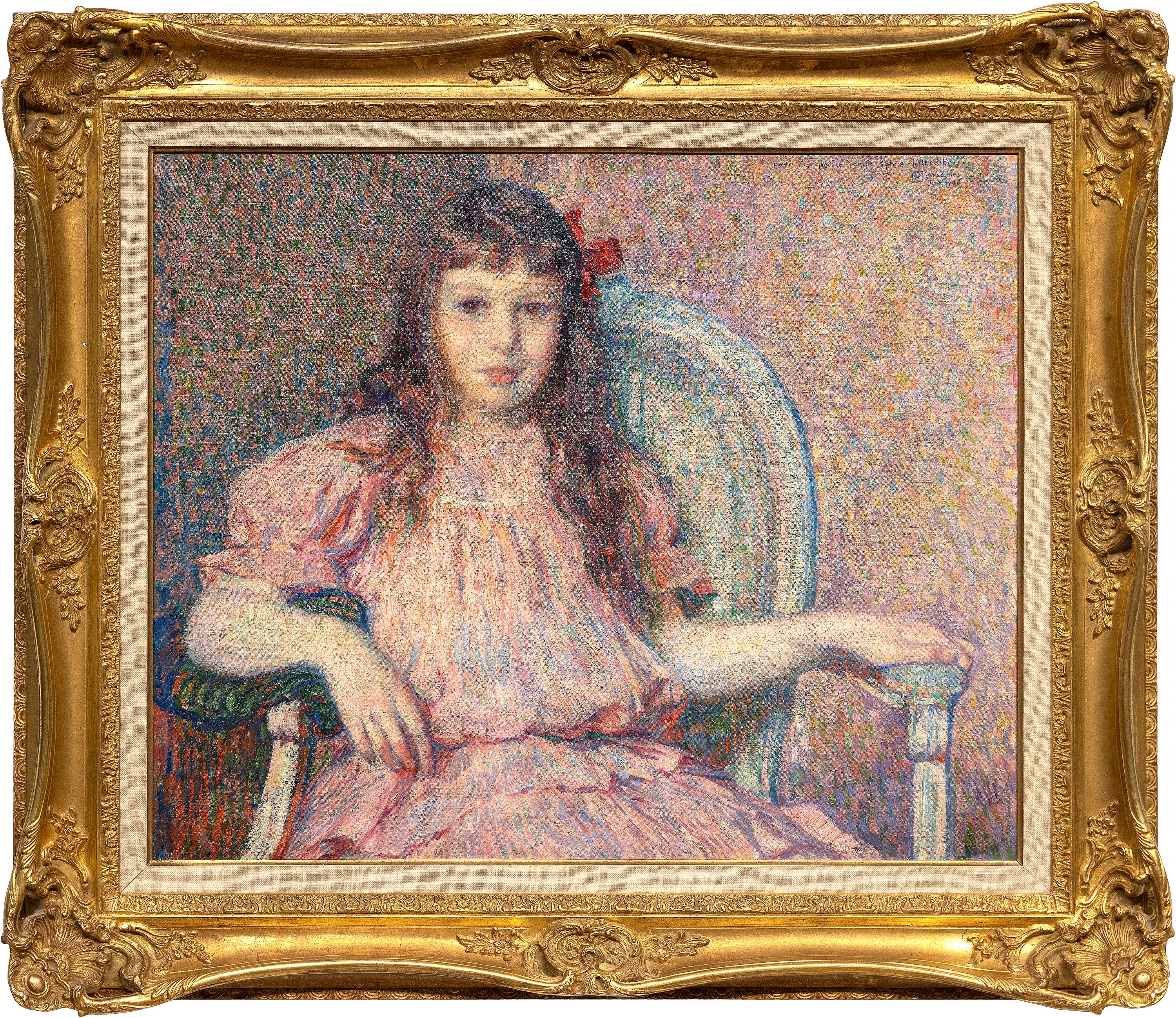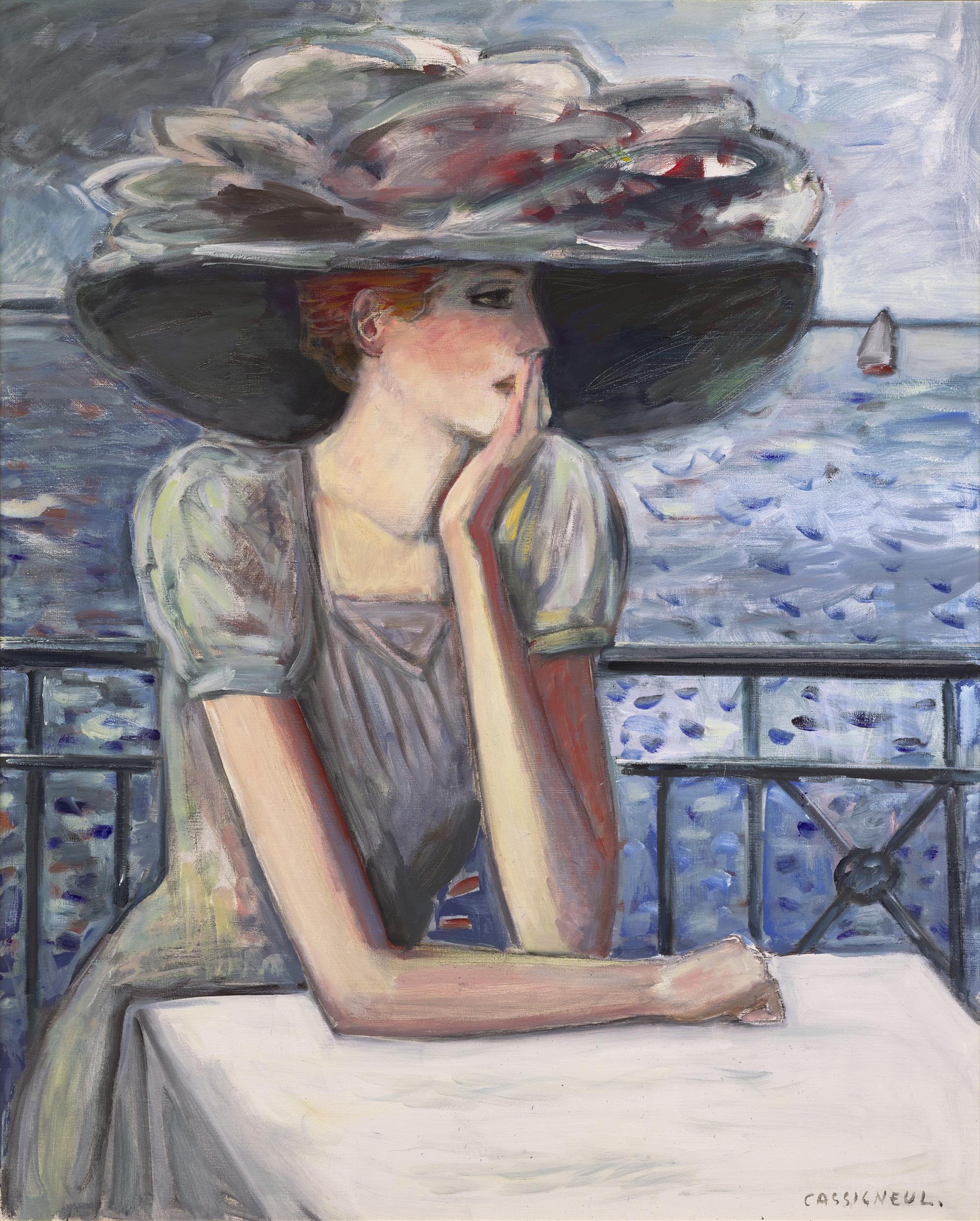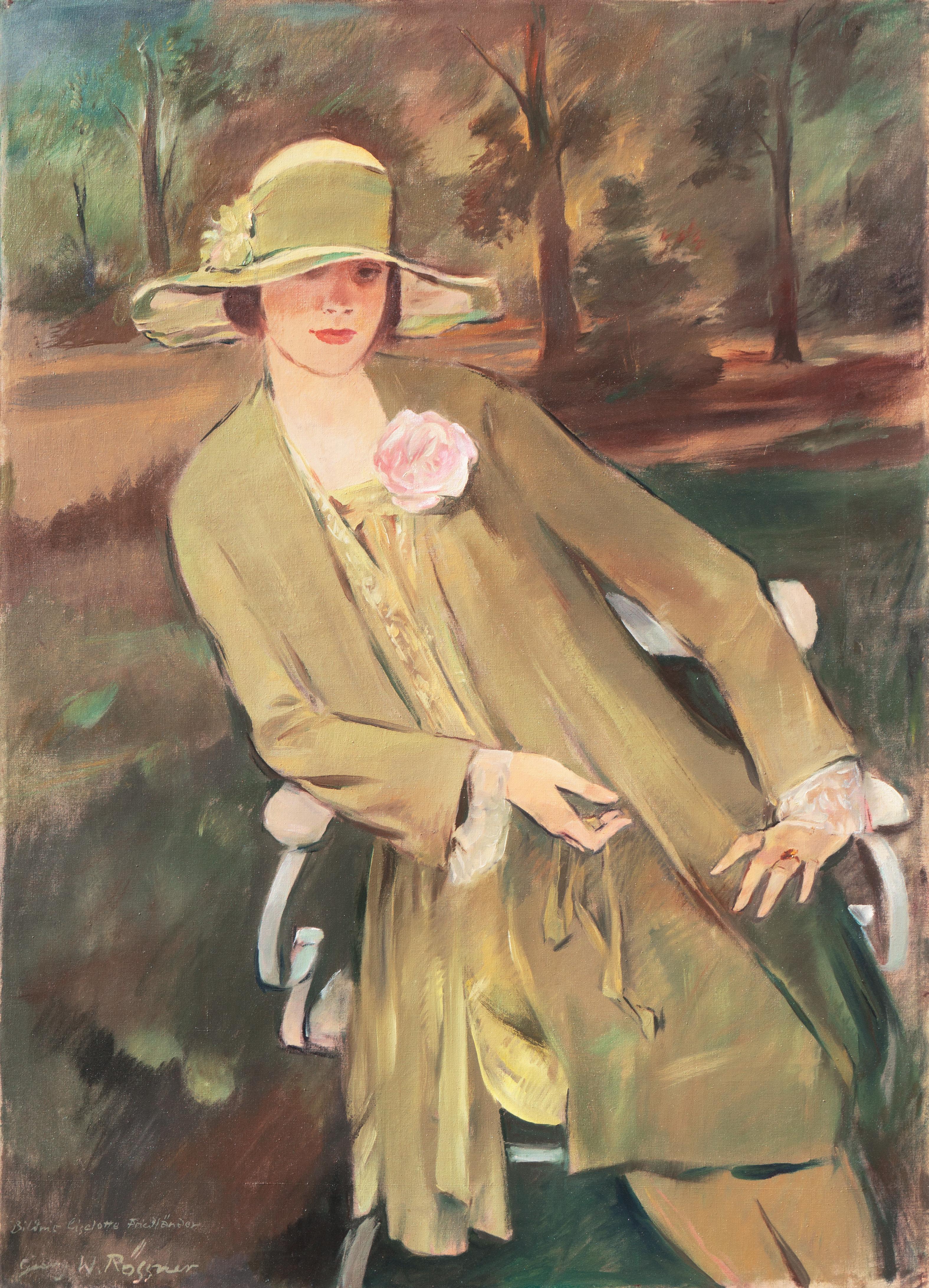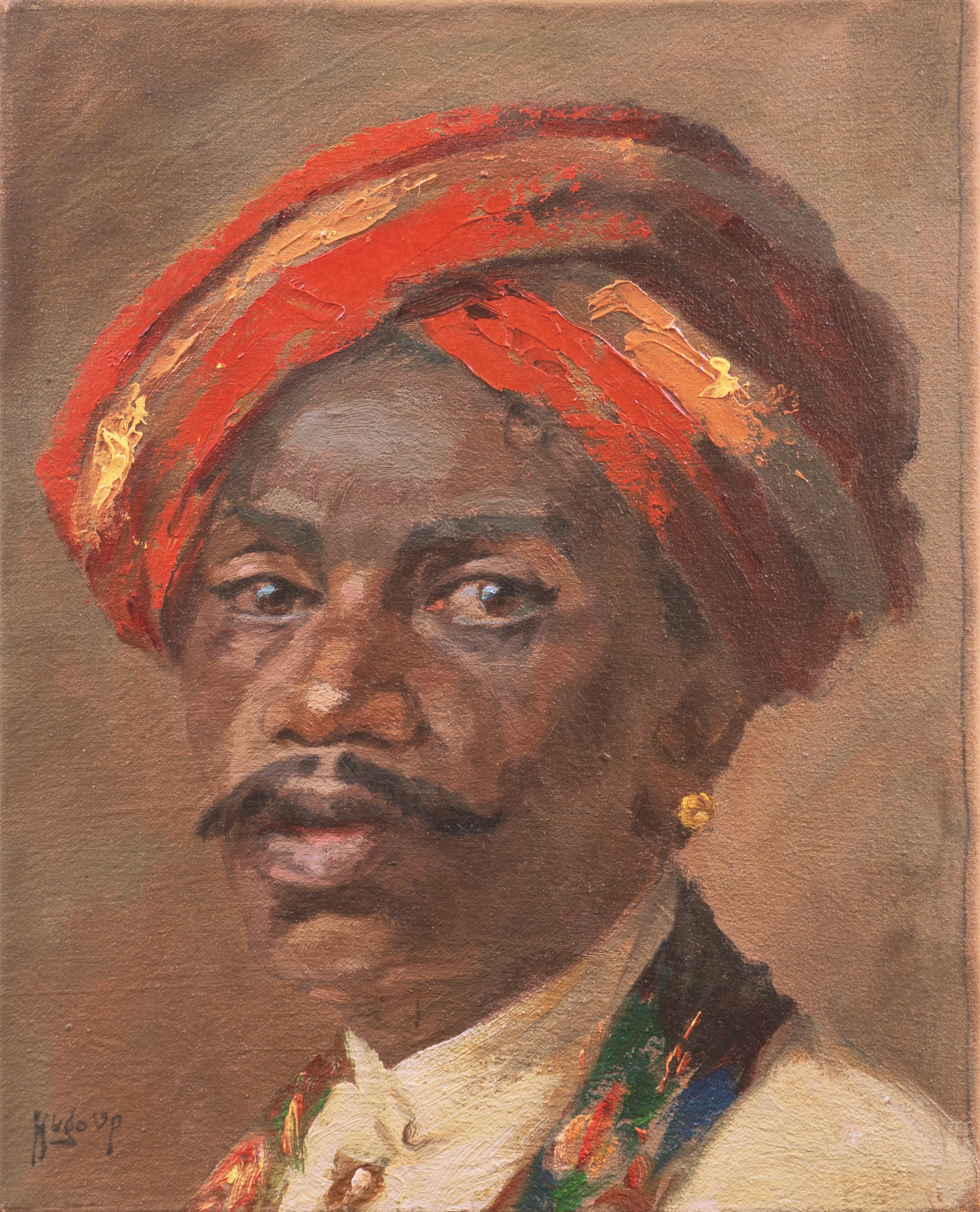Pierre-Auguste RenoirTête de Femme Blonde by Pierre-Auguste Renoir - Portrait painting1908
1908
About the Item
- Creator:Pierre-Auguste Renoir (1841-1919, French)
- Creation Year:1908
- Dimensions:Height: 10.28 in (26.1 cm)Width: 7.49 in (19 cm)
- Medium:
- Movement & Style:
- Period:
- Condition:
- Gallery Location:London, GB
- Reference Number:1stDibs: LU261213613302
Pierre-Auguste Renoir
An early 20th-century master, Pierre-Auguste Renoir created thousands of figurative prints and paintings and is credited as one of the founders of the Impressionist movement. His frequently reproduced works are appreciated for their luminous appearance, rich colors and soft, feathered brushstrokes.
Renoir was born in Limoges, France, in 1841. He began painting as a child while working in a porcelain factory, which led to a formal study of art in Paris under Charles Gleyre. In the early 1860s, he often visited the Louvre to study French master painters, and he became friends with Claude Monet and Alfred Sisley, both leading Impressionists.
Renoir first exhibited his paintings in 1864, but he did not rise to prominence until his first exhibition with the Impressionists in 1874. In 1877, Renoir stopped exhibiting with the Impressionists and embarked on a series of travels. In 1881, he went to Algeria and Spain, meeting the artists Eugène Delacroix and Diego Velázquez. He continued to Rome, Sicily, Algeria and Guernsey, where he created 15 paintings in one month in the summer of 1883.
In 1890, Renoir married Aline Victorine Charigot, a portrait model and muse for many of his works. They had three sons, and in 1907, Renoir moved his family to the village of Cagnes-sur-Mer, near the Mediterranean. By this time, he had developed arthritis in his hands, and he had a stroke in 1912, after which he used a wheelchair. Renoir continued to paint for the rest of his life, even strapping a brush to his paralyzed fingers.
Shortly before his death in 1919, Renoir visited the Louvre to see his paintings now hanging next to the artistic icons that he used to study and admire. He returned to his home village and died in December of that year.
On 1stDibs, find Pierre-Auguste Renoir paintings, prints and sculptures.
- ShippingRetrieving quote...Ships From: London, United Kingdom
- Return PolicyA return for this item may be initiated within 7 days of delivery.
- Le Collier de Perles by Ludovic-Rodo Pissarro - Portrait paintingBy Ludovic-Rodo PissarroLocated in London, GBLe Collier de Perles by Ludovic-Rodo Pissarro (1878-1952) Oil on canvas 61 x 50 cm (24 x 19 ⅝ inches) Signed and dated lower right, Ludovic Rodo 1927...Category
1920s Post-Impressionist Figurative Paintings
MaterialsCanvas, Oil
- Portrait of a Woman by Ludovic-Rodo Pissarro - Portrait paintingBy Ludovic-Rodo PissarroLocated in London, GB*UK BUYERS WILL PAY AN ADDITIONAL 20% VAT ON TOP OF THE ABOVE PRICE Portrait of a Woman by Ludovic-Rodo Pissarro (1878-1952) Oil on canvas 55 x 46 cm (21 ⁵/₈ x 18 ¹/₈ inches) Signed...Category
Early 1900s Fauvist Figurative Paintings
MaterialsOil, Canvas
- Femme à la cravatte by Ludovic-Rodo Pissarro - Portrait paintingBy Ludovic-Rodo PissarroLocated in London, GBFemme à la cravatte by Ludovic-Rodo Pissarro (1878-1952) Oil on canvas 65 x 54 cm (25 ⁵/₈ x 21 ¹/₄ inches) Signed lower right, Ludovic Rodo Executed circa 1910 This work is accompan...Category
1910s Post-Impressionist Figurative Paintings
MaterialsOil, Canvas
- Figurative oil painting titled Femme Mettant Son Bas by Georges Manzana PissarroBy Georges Henri Manzana PissarroLocated in London, GBFemme Mettant Son Bas by Georges Manzana Pissarro (1871 - 1961) Oil on canvas 100 x 56 cm (39 ⅜ x 22 inches) Signed and dated lower left, G. Manzana 1905 This work is accompanied by...Category
Early 1900s Post-Impressionist Figurative Paintings
MaterialsCanvas, Oil
- Nylons and Bric-a-Brac by Orovida Pissarro - Oil paintingBy Orovida PissarroLocated in London, GB*UK BUYERS WILL PAY AN ADDITIONAL 20% VAT ON TOP OF THE ABOVE PRICE Nylons and Bric-a-Brac by Orovida Pissarro (1893-1968) Oil on canvas 73 x 60 cm (28 ³/₄ x 23 ⁵/₈ inches) Signed and dated upper right Orovida 1951 Provenance Estate of the artist With John Bensusan-Butt, cousin of the artist G Hassell, 25th November 1988 With John Noott, 10th June 1992 Literature K L Erickson, Orovida Pissarro: Painter and Print-Maker with A Catalogue Raisonné of Paintings, (doctoral thesis), Oxford, 1992, Appendices, no. 141 (illustrated) Exhibition London, Redfern Gallery, Recent Paintings: Orovida, 3rd-26th January 1952, no. 51 Artist biography Orovida Camille Pissarro, Lucien and Esther Pissarro’s only child, was the first woman in the Pissarro family as well as the first of her generation to become an artist. Born in Epping, England in 1893, she lived and worked predominantly in London where she became a prominent member of several British arts clubs and societies. She first learned to paint in the Impressionist style of her father, but after a brief period of formal study with Walter Sickert in 1913 she renounced formal art schooling. Throughout her career, Orovida always remained outside of any mainstream British art movements. Much to Lucien's disappointment she soon turned away from naturalistic painting and developed her own unusual style combining elements of Japanese, Chinese, Persian and Indian art. Her rejection of Impressionism, which for the Pissarro family had become a way of life, together with the simultaneous decision to drop her famous last name and simply use Orovida as a ‘nom de peintre’, reflected a deep desire for independence and distance from the weight of the family legacy. Orovida's most distinctive and notable works were produced from the period of 1919 to 1939 using her own homemade egg tempera applied in thin, delicate washes to silk, linen or paper and sometimes embellished with brocade borders. These elegant and richly decorative works generally depict Eastern, Asian and African subjects...Category
1950s Modern Figurative Paintings
MaterialsCanvas, Oil
- The Fortune Teller by Orovida Pissarro - Oil paintingBy Orovida PissarroLocated in London, GB*UK BUYERS WILL PAY AN ADDITIONAL 20% VAT ON TOP OF THE ABOVE PRICE The Fortune Teller by Orovida Pissarro (1893-1968) Oil on canvas 60 x 73 cm (23 ⁵/₈ x 28 ³/₄ inches) Signed and d...Category
1950s Modern Figurative Paintings
MaterialsCanvas, Oil
- Maria Van Rysselberghe au coin du feuBy Theo van RysselbergheLocated in Palm Desert, CA"Maria Van Rysselberghe au coin du feu" is a portrait painting by Post-Impressionist Théo van Rysselberghe. The portrait is signed lower right, "Atelier Van Rysselberghe". The framed...Category
1910s Post-Impressionist Portrait Paintings
MaterialsCanvas, Oil
- Portrait de Sylvie LacombeBy Theo van RysselbergheLocated in Palm Desert, CA"Portrait de Sylvie Lacombe" is a Post-Impressionist painting by Théo van Rysselberghe. The portrait is signed with monogram and dedication, upper right, "pour ma petite amie Sylvie ...Category
Early 1900s Post-Impressionist Portrait Paintings
MaterialsCanvas, Oil
- La lecture au jardin (Lesson in the Garden)By Georges d'EspagnatLocated in New Orleans, LAFrench Post-Impressionist painter Georges d’Espagnat captures a charming moment between a mother and her child in this vibrant oil on canvas. Rendered with a studied use of complementary colors and bold brushstrokes, the painting showcases the artist's unique Post-Impressionist style. Remembered as one of the most individualistic artists of the 20th century, his distinctive canvases bring together the loose brushwork of the Impressionists and the bold color palette favored by the Fauves. Together, they achieve a vibrant spontaneity that lends itself well to the carefree subjects of the present work. Masterfully composed, La lecture au jardin moves beyond the Impressionist instinct to capture a fleeting moment on canvas. Rather, d'Espagnat succeeds in creating a deep feeling of harmony in the work. Warm colors are perfectly balanced with cool tones, while vertical and horizontal lines are softened by the curves of the foliage and his subjects' figures. Through his simplification of forms and intentional use of color and line, he creates a scene that is carefully designed and thoroughly modern. A similar view of a mother and her child by d'Espagnat is currently in the collection of the Metropolitan Museum of Art (New York). The Post-Impressionist painter was an individualist since his youth, choosing to forgo traditional schooling in order to independently study the Old Masters in the Louvre. He soon became involved with the most prominent Impressionist and Post-Impressionist painters of the age, including Pierre-Auguste Renoir and Paul Signac, who themselves existed outside the traditional norms of French Academic training. In 1891, he exhibited at the Salon des Refusés, and again the following year at the Salon des Indépendants. By 1895, he held his first one-man show in Paris, and just three years later his success earned him a solo show at the prestigious Durand-Ruel Gallery. Between 1905 and 1910 he made several trips to visit Renoir on the Côte d’Azur. Their close friendship resulted in a group exhibition at Marcel Bernheim...Category
Late 19th Century Post-Impressionist Portrait Paintings
MaterialsCanvas, Oil
- L’air Qu’on Respire by Jean Pierre CassigneulBy Jean-Pierre CassigneulLocated in New Orleans, LAJean-Pierre Cassigneul b.1935 French L’air qu’on respire (The Air We Breath) Signed “Cassigneul” (lower right) Signed, titled and dated "L’air qu’on respire / Cassigneul / 2001" (...Category
21st Century and Contemporary Post-Impressionist Portrait Paintings
MaterialsCanvas, Oil
- 'Lieselotte Friedländer', Bauhaus, Berlin National Gallery, Munich SezessionBy Georg RössnerLocated in Santa Cruz, CASigned lower left, 'Georg W. Rössner' for Georg Walter Rössner (German, 1885-1972), titled 'Bildnis Lieselotte Friedländer' and painted circa 1926; original artist card verso. A substantial, Modernist portrait of the fashion designer, Lieselotte Friedländer, shown seated in a chrome-steel Bauhaus chair with a view beyond to a sunlit, woodland grove. Georg Rössner first studied in Berlin and, later, in Paris with Lovis Corinth. Rössner was a member of both the Berlin and Munich Sezession committees and, in 1920, was appointed professor at Berlin’s Staatliche Kunstschule. Over the course of a long career, Rössner exhibited internationally with success including at the 1929 Paris Exhibition des Peintres-Graveurs Allemands. His work is held in prominent private and public collections including the permanent collection of the National Gallery in Berlin. Born in 1898, Lieselotte Friedländer moved to Berlin with her family in 1909. By the mid-1920s, she had established herself as the Weimar Republic...Category
1920s Post-Impressionist Portrait Paintings
MaterialsCanvas, Oil
- 'Man in a Gold and Coral Turban', Copenhagen, Royal Academy, Benezit, Rajah, OilBy Hugo Vilfred PedersenLocated in Santa Cruz, CASigned lower left, 'Hugo V.P.' for Hugo Vilfred Pedersen (Danish, 1870-1959) and painted circa 1900. An antique oil painting of an Indian gentleman wearing a saffron and coral turban...Category
Early 1900s Post-Impressionist Portrait Paintings
MaterialsCanvas, Oil






